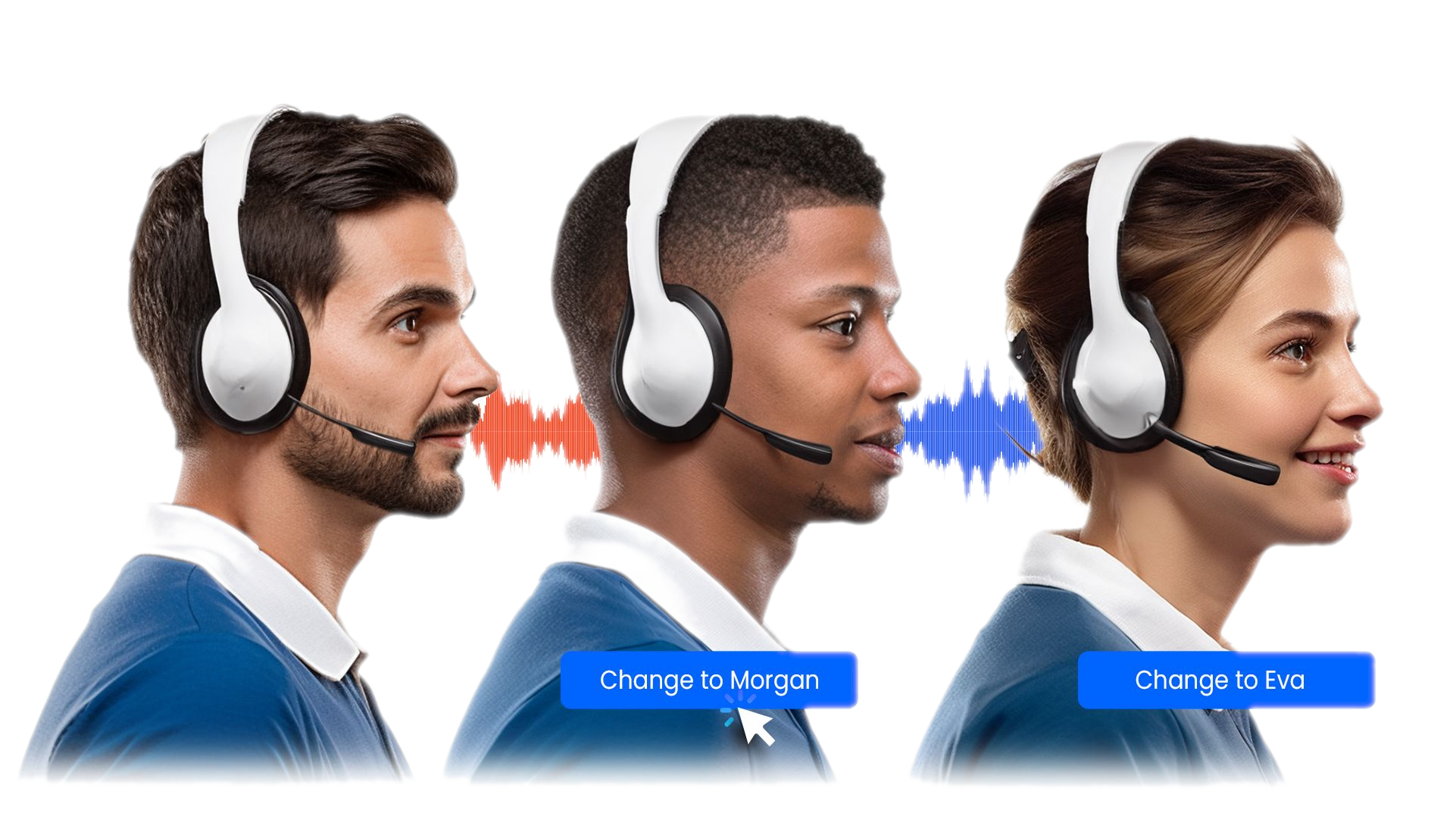What Voice Conditions can benefit from Euphonia
Overview of voice conditions and where Euphonia improves intelligibility
Euphonia's AI-powered voice correction technology can significantly improve communication for individuals with various voice conditions. By analyzing speech patterns in real-time, our system enhances clarity, reduces vocal strain artifacts, and improves overall intelligibility. The conditions listed below represent a comprehensive overview of voice disorders that may benefit from Euphonia.
Each condition affects voice quality differently, and Euphonia's adaptive algorithms can address many of these challenges but not all. It works only for voices that are still intelligible by boosting the intelligibility that already exists in the spoken speech.
The technology is available for English only.
Organic Conditions
| Condition Name | Affected Voice Aspects | Benefits of Real-Time Correction | Phoneme Impairment Likelihood | Euphonia Friendly | |
|---|---|---|---|---|---|
| Vocal Fold Nodules | Hoarseness, rough timbre; reduced pitch range; vocal fatigue | Filters roughness, amplifies volume, restores high-frequency energy for clarity | low | ✓ | |
| Vocal Fold Polyps | Hoarse, breathy voice; diplophonia; reduced loudness; lower pitch | Reduces harsh noise, stabilizes pitch, increases vocal energy for a natural sound | low | ✓ | |
| Vocal Fold Cysts | Breathy, weak phonation; mild hoarseness; voice fatigue; pitch breaks | Strengthens weak voice with amplification, adds fullness, minimizes drop-outs | low | ✓ | |
| Contact Granulomas | Hoarse, breathy; effortful phonation; guarded, soft voice | Amplifies soft voice, smooths rough edges, equalizes volume despite pain | low | ✓ | |
| Papillomatosis (Papillomas) | Severe hoarseness; low, strained voice; reduced clarity; possible airway noise | Suppresses background noise, clarifies formants, amplifies for intelligibility | mid | ✓ | |
| Laryngeal Cancer (pre-surgery) | Progressive hoarseness; rough, strained voice; eventual weak or no voice | mid | ✗ | ||
| Post-Laryngectomy Voice | Electrolarynx: monotone, buzzy; TE speech: low-pitch, hoarse; esophageal: low volume | Transforms electrolarynx tone, injects prosody, cleans & amplifies alaryngeal speech | high | ✓ | |
| Presbyphonia (Aging Voice) | Weak, breathy; reduced loudness; pitch changes; tremor | Amplifies voice, stabilizes tremor, adjusts pitch for youthful range | low | ✓ |
Neurological Conditions
| Condition Name | Affected Voice Aspects | Benefits of Real-Time Correction | Phoneme Impairment Likelihood | Euphonia Friendly | |
|---|---|---|---|---|---|
| Vocal Fold Paralysis | Breathy, weak voice; low volume; monotone; short phrasing | Boosts volume, compresses dynamics, fills missing frequencies | mid | ✓ | |
| Myasthenia Gravis Voice | Fatigue-related weakness; breathy; monotone; vocal fade-outs; hypernasal | mid | ✗ | ||
| Spasmodic Dysphonia (Adductor) | Strained-strangled voice; voice breaks; choppy, effortful speech | Attenuates breaks, softens strain, smooths speech continuity | mid | ✓ | |
| Spasmodic Dysphonia (Abductor) | Breathy drops; cut-off words; whispery interruptions | Amplifies dropouts, balances volume for steady speech | low | ✓ | |
| Essential Vocal Tremor | Rhythmic pitch & loudness oscillations; unstable "wobbly" voice | Stabilizes frequency & amplitude, yields smoother voice | mid | ✓ | |
| Parkinsonian Dysphonia | Low volume; monotone; muffled; rapid rushes; possible tremor | high | ✗ | ||
| ALS Dysarthria | Strained/breathy; hypernasal; slurred; monotone; progressive | very high | ✗ | ||
| MS Dysarthria | Scanning speech; slurred; bursts of loudness; monotony | low | ✗ | ||
| Stroke/TBI Dysarthria (Spastic) | Strained, harsh; slow rate; low pitch; hypernasal; imprecise | mid | ✗ | ||
| Stroke Dysarthria (Flaccid) | Breathy, weak; hypernasal; imprecise consonants | mid | ✗ | ||
| Cerebellar/Ataxic Dysarthria | Irregular prosody; scanning; dysprosody; uneven articulation | mid | ✗ |
Functional Conditions
| Condition Name | Affected Voice Aspects | Benefits of Real-Time Correction | Phoneme Impairment Likelihood | Euphonia Friendly | |
|---|---|---|---|---|---|
| Muscle Tension Dysphonia | Strained, tight; pressed; vocal fatigue | Reduces tension noise, equalizes pitch, stabilizes volume, smooths tone | low | ✓ | |
| Psychogenic Aphonia/Dysphonia | Aphonia: whisper only; Dysphonia: intermittent/atypical | Whisper-to-voice conversion, stabilizes breaks, restores natural tone | high | ✓ | |
| Puberphonia (Mutational Falsetto) | Inappropriately high pitch; breathy; weak | Pitch shift down, add chest resonance, improve volume & congruence | very low | ✓ | |
| Ventricular Phonation | Low-pitched, rough; muffled; monotone | Filter growl, amplify true-fold component, pitch raise, clarity boost | mid | ✓ | |
| Whispered Speech (Stutter Avoidance) | Unvoiced; soft; lacking prosody | Whisper-to-speech synthesis, add pitch & volume, restore prosody | low | ✓ |
Fluency Disorders
| Condition Name | Affected Voice Aspects | Benefits of Real-Time Correction | Phoneme Impairment Likelihood | Euphonia Friendly | |
|---|---|---|---|---|---|
| Developmental Stuttering | Repetitions, prolongations, blocks; normal voice otherwise | Reduces significantly with whispering. Euphonia can be used to dewhisper the voice. | low | ✓ | |
| Cluttering | Rapid/irregular rate; dropped syllables; jerky; mumbled | mid | ✗ | ||
| Neurogenic Stuttering | Repetitions/blocks on any word; co-occurs with aphasia/dysarthria | low | ✗ |
Disclaimer
Medical Advisory: Euphonia is an assistive technology tool designed to enhance voice clarity and communication effectiveness. It is not a medical device and should not be considered a substitute for professional medical diagnosis, treatment, or speech therapy.
Professional Consultation: Always consult with qualified healthcare professionals, including speech-language pathologists, otolaryngologists, or other medical specialists for proper evaluation, diagnosis, and treatment of voice conditions.
Individual Results: The effectiveness of voice enhancement may vary significantly between individuals and conditions. Results depend on factors including the severity of the condition, individual voice characteristics, and the specific nature of the speech impairment.
Therapy Complement: Euphonia is designed to complement, not replace, traditional speech therapy and medical interventions. Continue following your healthcare provider's treatment recommendations while using assistive technologies.

Experience
RealTime Pro
- video calls
- voice chats
- voice calls
- video calls